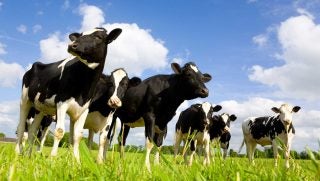The 2022 Census of Agriculture that the U.S. Department of Agriculture released on Feb. 13 provided a window into the diverse makeup of the American agricultural industry.
In 2022, there were 1,900,487 farmers, reflecting a decrease of nearly 7 percent since the last census in 2017. The data, however, was also indicative of challenges faced by farmers across racially diverse backgrounds, showing a declining trend in farm ownership among most demographics, with notable exceptions in the Asian community (up 6 percent) and Native Hawaiians (up 15 percent).
Asians went from 18,338 farms in 2017 to 19,492 while increasing the market value of products sold by 4.5 million. Hawaiians also had an increase in the number of farms from 4,341 to 4,994 while increasing their product revenue from $718,422 to $1,675,934 in 2022.

Despite these positive figures, these numbers point to larger shared struggles within the agricultural sector.
Hispanic farm ownership declined by 3 percent from 2017 to 2022. Despite this, there was a positive economic shift, with revenue from their agricultural products increasing from $21,923,544 to $33,485,514. Additionally, there were 11,820 Hispanic-owned farms operating in fruits, nuts, and trees, which is an increase from 11,699 in 2017. Hispanics, collectively, account for 36 million acres of farmland ownership – an increase of 4 million acres compared to the previous census.
The number of Hispanic, Latino, or Spanish-origin producers remained stable, with only a minor decrease of 72 producers from 2017. Among the 112,379 producers, the USDA data revealed a decline in male producers but a rise in female counterparts in this segment.
Similarly, the story for Black or African American farmers reflected a decline in numbers — from 35,470 in 2017 to 32,653 in 2022. However, there was a silver lining as revenue from product sales and government payments increased by $1,368,642. The footprint of Black-operated farms also experienced growth, increasing from 4.6 million to 5.3 million acres, indicating positive momentum within this segment of the agricultural community.
Looking deeper at the data, among the 46,738 African American producers, 1,959 fewer than the previous census, a notable 14,387, were women. Although this is only 224 more women than in 2017, this highlights consistency in the long-awaited shift to a more inclusive agricultural workforce.
John Boyd Jr., the founder of the National Black Farmers Association who has spent decades advocating on Capitol Hill and across America’s farmlands for the rights of Black farmers, highlighted the challenges faced by this demographic by telling AGDAILY that “Black farmers are facing extinction.” The latest declines seen in the census are another step in a generations-long trend among America’s Black farmers, which has seen declines in numbers and acreage. For example, in 1910, Black people owned about 16 million acres of land in the U.S.; today, it’s less than 5 million. Still, that’s an improvement from the 1980s, when the number had been closer to 3 million acres.
There are many factors at play contributing to the decline, including access to capital, education, and the complex issue known as heir’s property, where land passed from generation to generation without standardized legal paperwork, often the result of an ancestor who died without a will. More than 60 percent of Black farmers currently operate on heir’s property.

He also said that more funding is needed to help all farmers succeed and keep the industry stable.
We “need to start investing in our farmers, no matter their race,” Boyd said, lamenting how federal money gets sent overseas while rising diesel and fertilizer costs domestically are allowed to get out of control.
Age is another way the diversity of agriculture can be examined. The majority of farmers, 837,525, fell within the 55 to 64 age bracket. However, concerns linger as the number of young farmers in the 25 to 34 age group remains disproportionately low at 239,480. The average age of farmers as a whole was 58.1 — that’s a bit higher compared with the 2017 average of 57.5 years.
This demographic trend signals potential challenges in securing the future of American agriculture and, consequently, the nation’s food supply.
No matter a producer’s background — be it American Indian, Asian, Black, Native Hawaiian, White, or Hispanic — the most common category for farms is beef production. This sector had a decrease in revenue from 729,046 in 2017 to 666,162.
David Salazar serves as the 2024 American Farmland Trust Agriculture Communications Intern at AGDAILY, with a focus on helping to amplify diversity and minority voices in agriculture. David is originally from King City, California, and attended the University of California, Fresno, as a first-generation college student. He received a bachelor’s degree in viticulture and enology and has worked in California’s premier wine producing regions.





